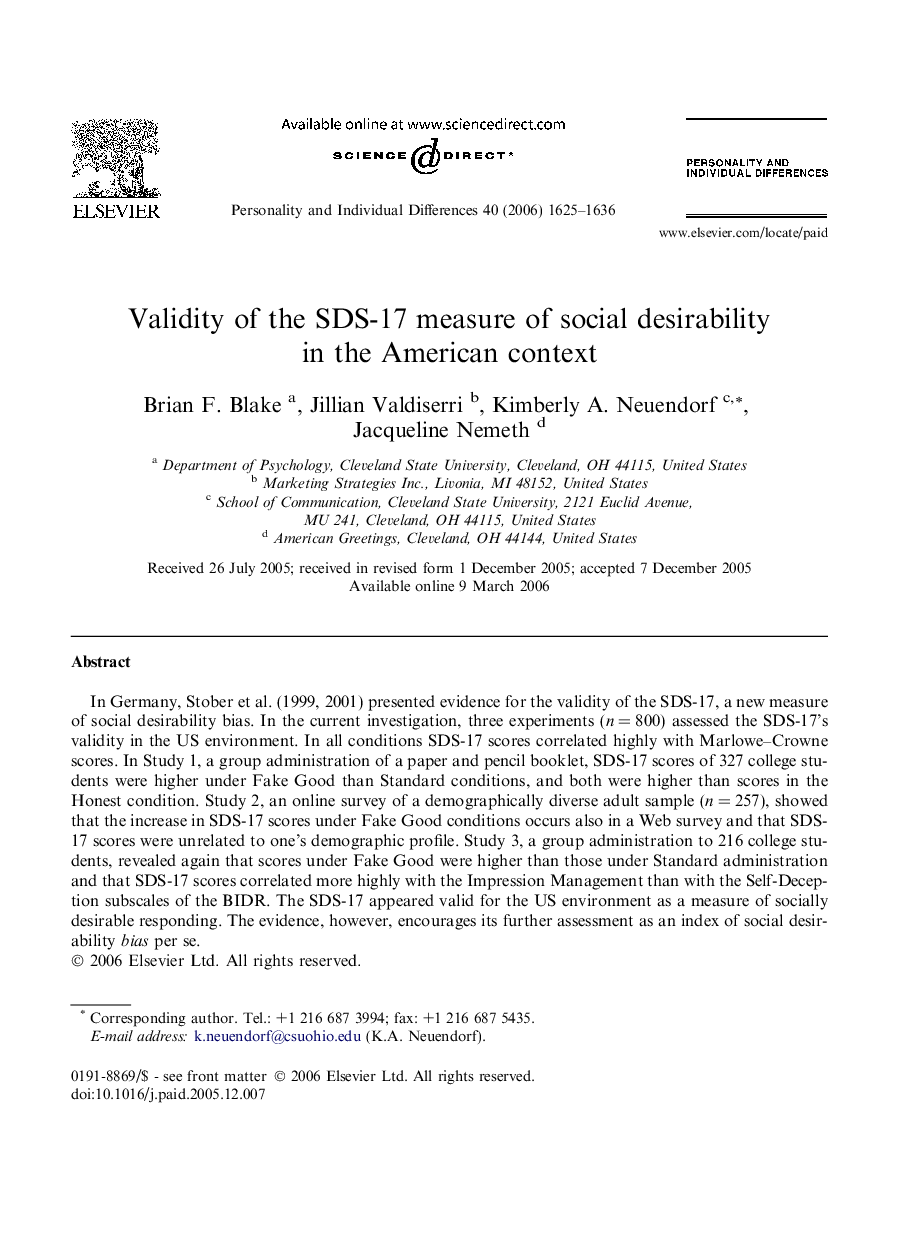| Article ID | Journal | Published Year | Pages | File Type |
|---|---|---|---|---|
| 893221 | Personality and Individual Differences | 2006 | 12 Pages |
In Germany, Stober et al. (1999, 2001) presented evidence for the validity of the SDS-17, a new measure of social desirability bias. In the current investigation, three experiments (n = 800) assessed the SDS-17’s validity in the US environment. In all conditions SDS-17 scores correlated highly with Marlowe–Crowne scores. In Study 1, a group administration of a paper and pencil booklet, SDS-17 scores of 327 college students were higher under Fake Good than Standard conditions, and both were higher than scores in the Honest condition. Study 2, an online survey of a demographically diverse adult sample (n = 257), showed that the increase in SDS-17 scores under Fake Good conditions occurs also in a Web survey and that SDS-17 scores were unrelated to one’s demographic profile. Study 3, a group administration to 216 college students, revealed again that scores under Fake Good were higher than those under Standard administration and that SDS-17 scores correlated more highly with the Impression Management than with the Self-Deception subscales of the BIDR. The SDS-17 appeared valid for the US environment as a measure of socially desirable responding. The evidence, however, encourages its further assessment as an index of social desirability bias per se.
